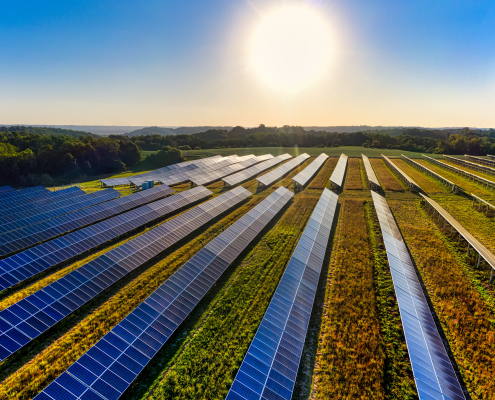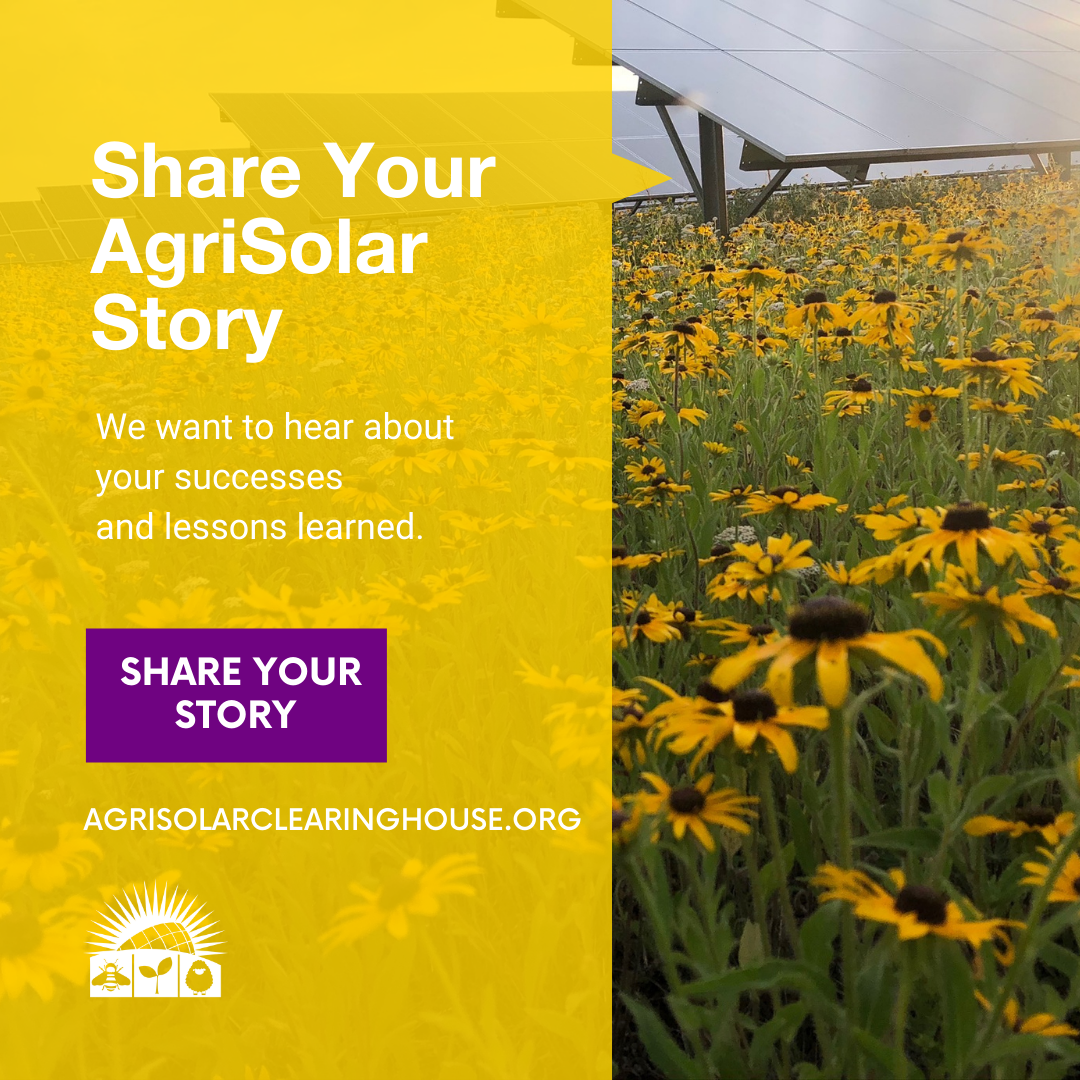About AgriSolar
The AgriSolar Clearinghouse is an information-sharing, relationship-building, public communications hub for all things agrisolar. The AgriSolar Clearinghouse:
- Connects farmers, graziers, developers, researchers, and the public,
- Collaborates on sustainable agrisolar opportunities,
- Provides practical technical assistance,
- Develops best practices and innovative solutions, and
- Celebrates the agrisolar community.
Watch our new short film, Harvesting the Sun, now!



